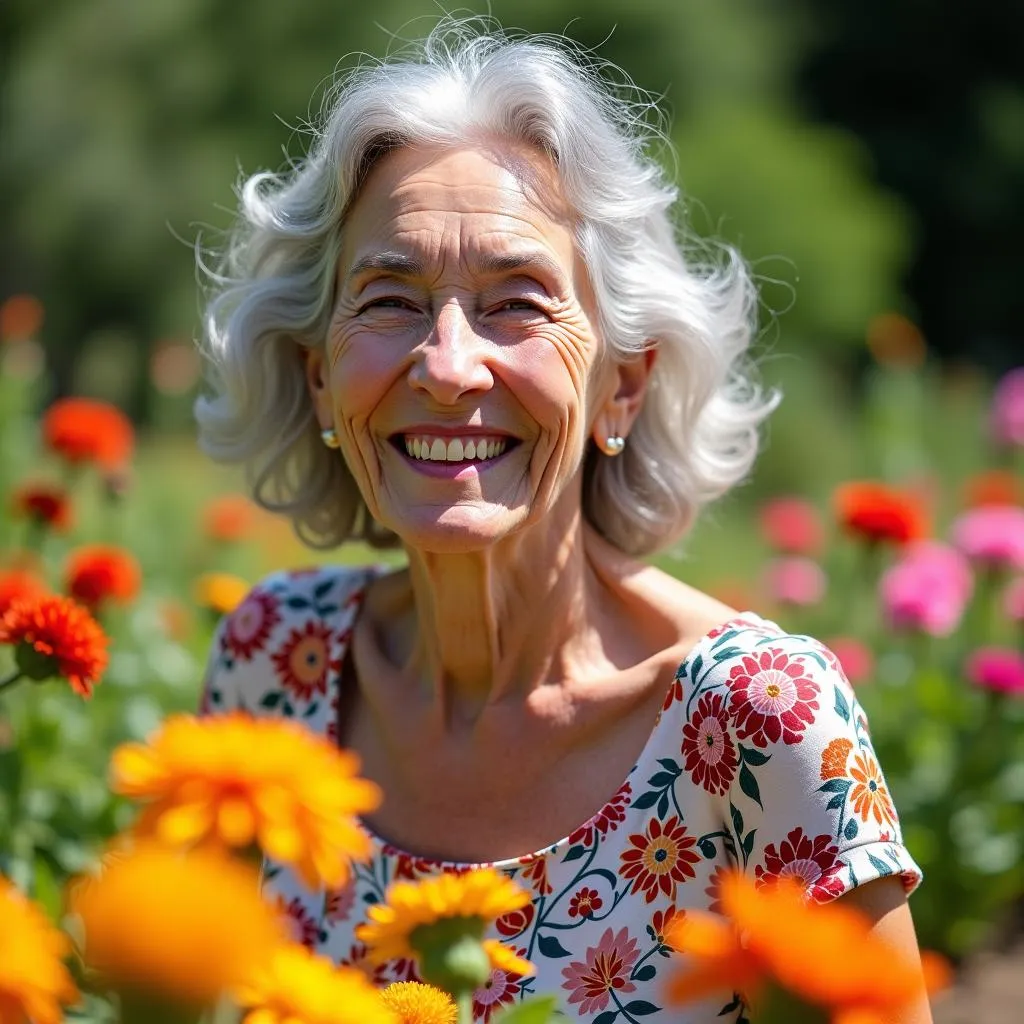The topic of describing a photograph is a common theme in IELTS Speaking tests. It has appeared frequently in past exams and is likely to continue being a popular subject in future tests. This topic allows examiners to assess candidates’ ability to describe visual elements, express personal opinions, and discuss memories or emotions associated with images.
Nội dung bài viết
Describe a place in your country that you would like to photograph is a related topic that can help you practice descriptive language and express your appreciation for photography. Let’s explore how to effectively answer questions about describing a photograph you like in each part of the IELTS Speaking test.
Part 1: Introduction and Interview
In this section, the examiner may ask some general questions about photography. Here are a few examples:
- Do you like taking photographs?
- How often do you take photos?
- What do you usually take photos of?
- Do you prefer taking photos or being in photos?
Let’s look at a sample answer for the first question:
Examiner: Do you like taking photographs?
Candidate (Band 7-8 answer): Yes, I absolutely adore taking photographs. It’s become a real passion of mine over the years. I find it’s a wonderful way to capture memories and express my creativity. Whether it’s snapping candid shots of friends and family or composing landscape images, I always have my camera ready to seize those perfect moments.
Part 2: Long Turn
Here’s a sample cue card related to describing a photograph you like:
Describe a photograph that you like
You should say:
- What the photograph shows
- When and where the photograph was taken
- Why you like this photograph
And explain how this photograph makes you feel
Here’s a sample answer for Band 8-9:
I’d like to talk about a photograph that holds a special place in my heart. It’s a candid shot of my grandmother, taken on her 80th birthday last summer in our family garden. The image beautifully captures her radiant smile as she’s surrounded by a sea of vibrant flowers, with sunlight gently illuminating** her face.
In the photograph, my grandmother is wearing her favorite floral-patterned dress, which complements the garden setting perfectly. Her silver hair is neatly styled, and her eyes are twinkling with joy. You can see the laughter lines around her eyes, which I think add character to her face and tell a story of a life well-lived.
The photograph was taken by my cousin, who has a keen eye for photography. He managed to capture this fleeting moment during our family gathering, when my grandmother was caught off guard by a joke someone had just told. The natural, unposed quality of the image is what makes it so special to me.
I adore this photograph for several reasons. Firstly, it perfectly encapsulates my grandmother’s warm and joyful personality. Secondly, the composition is visually striking, with the colorful flowers framing her face and creating a beautiful contrast with her white hair. Lastly, it serves as a poignant reminder of that wonderful day when our entire family came together to celebrate her milestone birthday.
This photograph never fails to evoke a sense of nostalgia and warmth within me. It transports me back to that sunny afternoon, filled with laughter, love, and the aroma of my grandmother’s legendary apple pie. Moreover, it reminds me of the importance of cherishing moments with loved ones and appreciating the beauty in everyday life.
In essence, this photograph is more than just an image to me – it’s a treasured memory frozen in time, a testament to my grandmother’s enduring spirit, and a source of inspiration to find joy in life’s simple pleasures.**
 Grandmother's 80th birthday in garden with flowers
Grandmother's 80th birthday in garden with flowers
Follow-up questions:
- How has photography changed in recent years?
- Do you think traditional film photography still has a place in the digital age?
Sample answer for question 1 (Band 8-9):
Photography has undergone a radical transformation in recent years, primarily due to the advent of digital technology. The shift from film to digital has democratized the art form, making it more accessible to the masses. Smartphones with high-quality cameras have turned almost everyone into a potential photographer, leading to an explosion of visual content** on social media platforms.
Moreover, editing software has become increasingly sophisticated, allowing for post-processing techniques that were once the domain of professionals. This has blurred the lines between photography and digital art. The rise of AI-powered cameras is another significant development, with features like portrait mode and night sight enabling even amateur photographers to achieve professional-looking results.
However, this digital revolution has also sparked debates about authenticity in photography. The ease of manipulating images has raised questions about the truthfulness of photojournalism and documentary photography. On the flip side, it has also opened up new avenues for creative expression and artistic experimentation.
In essence, while the core principle of capturing light remains the same, the tools and techniques of photography have evolved dramatically, reshaping our relationship with visual imagery and how we document and share our experiences.**
Part 3: Two-way Discussion
In this section, the examiner will ask more abstract questions related to the topic. Here are some examples:
- How has social media influenced the way people take and share photographs?
- Do you think professional photography is still valuable in the age of smartphones?
- What ethical considerations should photographers keep in mind?
Let’s look at a sample answer for the first question:
Examiner: How has social media influenced the way people take and share photographs?
Candidate (Band 8-9 answer): Social media has had a profound impact on photography, revolutionizing both the way we capture images and how we share them. Platforms like Instagram and Facebook have created a culture of constant visual documentation, where people feel compelled to showcase every aspect of their lives through photographs.
This shift has led to the rise of ‘Instagram-worthy’ content, where the aesthetic appeal of an image often takes precedence over its authenticity or emotional value. We’ve seen the emergence of specific poses, filters, and editing styles that are designed to garner likes and engagement. This has both positive and negative implications – while it has encouraged creativity and visual storytelling, it has also been criticized for promoting unrealistic standards and a curated version of reality.
Moreover, the instant sharing capabilities of social media have transformed photography from a means of preserving memories to a form of real-time communication. People now use photos to share experiences as they happen, leading to a more immediate and interactive form of visual storytelling.
However, this constant stream of images has also led to concerns about digital overload and the devaluation of photography as an art form. With millions of photos being shared every minute, truly impactful images can often get lost in the noise.
In essence, while social media has democratized photography and provided a global platform for sharing images, it has also altered our relationship with visual content, sometimes prioritizing quantity over quality and instant gratification over lasting impact.**
Describe a natural place that has changed over time is another topic that can help you practice discussing visual changes and environmental issues, which are relevant to photography discussions.
Key Vocabulary and Phrases
To achieve a high score in IELTS Speaking when describing a photograph, consider using these advanced words and phrases:
-
Composition (noun) /ˌkɒmpəˈzɪʃən/ – the way in which parts of a picture are arranged
Example: The composition of the photograph draws the viewer’s eye to the subject’s face. -
Capture (verb) /ˈkæptʃə(r)/ – to represent or record in a lasting form
Example: The photographer managed to capture the raw emotion of the moment. -
Evocative (adjective) /ɪˈvɒkətɪv/ – bringing strong images, memories, or feelings to mind
Example: The black and white photograph is highly evocative of the post-war era. -
Juxtaposition (noun) /ˌdʒʌkstəpəˈzɪʃn/ – the fact of two things being placed close together with contrasting effect
Example: The juxtaposition of old and new buildings in the cityscape creates a striking image. -
Candid (adjective) /ˈkændɪd/ – (of a photograph) taken informally, especially without the subject’s knowledge
Example: I prefer candid shots to posed photographs as they often reveal more about the subject’s personality.
Describe a memorable gift you received can be an interesting topic to practice, especially if the gift was a photograph or camera.
Examiner’s Advice
To excel in the IELTS Speaking test when describing a photograph:
-
Practice describing various types of photographs – landscapes, portraits, action shots, etc. This will help you develop a diverse vocabulary for different scenarios.
-
Focus on both technical aspects and emotional responses – discuss the composition, lighting, and subject matter, as well as how the photograph makes you feel.
-
Use a range of descriptive adjectives and avoid repetition. Instead of just saying “nice” or “beautiful,” use more specific terms like “striking,” “poignant,” or “mesmerizing.”
-
Structure your response logically, moving from a general description to specific details and then to your personal interpretation or feelings.
-
Incorporate relevant personal anecdotes or opinions to make your response more engaging and demonstrate your ability to connect ideas.
Remember, the key to success in IELTS Speaking is not just about using advanced vocabulary, but also about expressing your ideas clearly, coherently, and confidently.
Describe a photograph in your home is another excellent topic to practice, as it combines descriptive language with personal experiences and emotions.
By following these tips and practicing regularly, you’ll be well-prepared to tackle any question about describing a photograph in your IELTS Speaking test. Good luck!
 IELTS Speaking preparation with study materials
IELTS Speaking preparation with study materials
Describe an expensive activity you enjoy occasionally could be related to photography if you enjoy activities like photo tours or investing in high-end camera equipment.


